People Behind Good Earth Tours
Our Team
Our Tour Guides
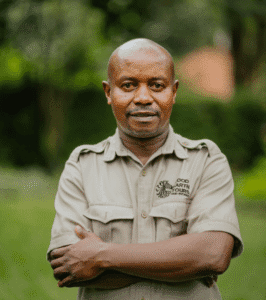
Emmanuel Joseph Mushi
Emmanuel is often the first warm welcome and the last smiling goodbye guests experience on their safari journey. As part of the airport transfers team, he ensures that each guest’s arrival and departure is smooth, safe, and comfortable. With a deep knowledge of Tanzania’s landscapes and wildlife, Emmanuel brings a guide’s curiosity and a local’s insight to every conversation—whether it’s your first time in Africa or your fifth.
What’s your favorite safari animal and why?
The leopard is my favorite. It’s a solitary animal, known for being extremely clean and independent. It hunts at night, keeps to itself, and doesn’t share its prey. There’s something elegant and mysterious about the way it moves and lives.
What’s your favorite national park or safari destination?
The Serengeti is my favorite park. It’s massive, with a wide variety of animals and landscapes. It’s home to the world’s largest migration, big cats, endless plains, and impressive rock formations like kopjes. Every corner of Serengeti feels wild and alive.
What’s one local phrase or word you think every safari-goer should know?
Jambo and Habari gani?—both are friendly Swahili greetings that go a long way with locals. And of course, Hakuna Matata—“no worries”—is the perfect phrase to carry with you on safari.
What’s your most memorable wildlife sighting?
I once saw a cheetah make a successful kill. Before it attacked, it paused and scanned the area carefully for other predators. Sure enough, about 20 minutes later, hyenas showed up and stole the prey. It was a powerful reminder of how challenging life in the wild can be—even for skilled hunters.
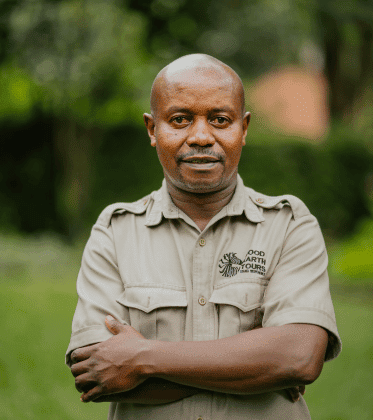
Emmanuel Joseph Mushi
Emmanuel is often the first warm welcome and the last smiling goodbye guests experience on their safari journey. As part of the airport transfers team, he ensures that each guest’s arrival and departure is smooth, safe, and comfortable. With a deep knowledge of Tanzania’s landscapes and wildlife, Emmanuel brings a guide’s curiosity and a local’s insight to every conversation—whether it’s your first time in Africa or your fifth.
What’s your favorite safari animal and why?
The leopard is my favorite. It’s a solitary animal, known for being extremely clean and independent. It hunts at night, keeps to itself, and doesn’t share its prey. There’s something elegant and mysterious about the way it moves and lives.
What’s your favorite national park or safari destination?
The Serengeti is my favorite park. It’s massive, with a wide variety of animals and landscapes. It’s home to the world’s largest migration, big cats, endless plains, and impressive rock formations like kopjes. Every corner of Serengeti feels wild and alive.
What’s one local phrase or word you think every safari-goer should know?
Jambo and Habari gani?—both are friendly Swahili greetings that go a long way with locals. And of course, Hakuna Matata—“no worries”—is the perfect phrase to carry with you on safari.
What’s your most memorable wildlife sighting?
I once saw a cheetah make a successful kill. Before it attacked, it paused and scanned the area carefully for other predators. Sure enough, about 20 minutes later, hyenas showed up and stole the prey. It was a powerful reminder of how challenging life in the wild can be—even for skilled hunters.
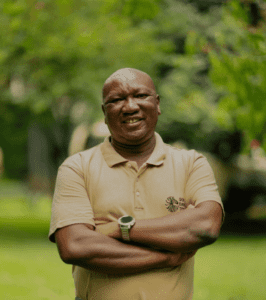
James Chitete
Meet James! He brings a calm confidence to every safari, with a deep appreciation for wildlife and a special love for the quieter, more elusive moments in nature. With a background in tourism and years of experience in the field, James knows how to guide guests through both thrilling encounters and peaceful sunrises alike.
What’s your favorite safari animal and why?
The leopard is my favorite animal. It’s one of the most elusive and shy creatures you’ll find on safari, which makes spotting one feel like a real reward. Their ability to stay hidden in plain sight fascinates me every time.
What’s your favorite safari memory or moment?
One of my most unforgettable moments was when a rhino, resting beside the road, suddenly charged at our vehicle. It was completely unexpected. I kept calm, stayed put, and was able to de-escalate the situation safely. It’s a moment that reminded me how important steady nerves and experience are out in the bush.
How did you get started in the travel or safari industry?
After completing a two-year tourism course, I started working as a camp crew member. That gave me the chance to really get to know the different national parks and understand how everything operates. From there, I transitioned into guiding—and I’ve never looked back.
What’s your favorite national park or safari destination?
Tarangire National Park is my favorite. I’ve always been drawn to elephants, and Tarangire is the best place to see them in large numbers. The park also has a distinct landscape and vegetation that sets it apart from anywhere else.
Do you prefer sunrise or sunset on safari? Why?
I love both sunrise and sunset. These are the times when the sky puts on a show—from deep reds and oranges to soft greys and blues. You also hear the birds start or end their day, and there’s a peacefulness in those moments that feels healing to the soul.
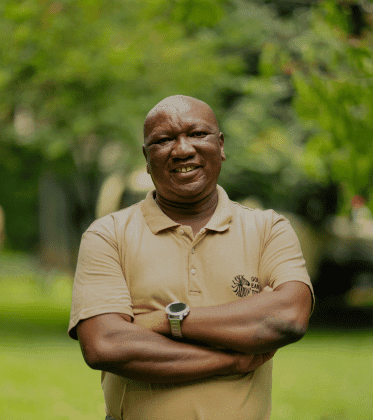
James Chitete
Meet James! He brings a calm confidence to every safari, with a deep appreciation for wildlife and a special love for the quieter, more elusive moments in nature. With a background in tourism and years of experience in the field, James knows how to guide guests through both thrilling encounters and peaceful sunrises alike.
What’s your favorite safari animal and why?
The leopard is my favorite animal. It’s one of the most elusive and shy creatures you’ll find on safari, which makes spotting one feel like a real reward. Their ability to stay hidden in plain sight fascinates me every time.
What’s your favorite safari memory or moment?
One of my most unforgettable moments was when a rhino, resting beside the road, suddenly charged at our vehicle. It was completely unexpected. I kept calm, stayed put, and was able to de-escalate the situation safely. It’s a moment that reminded me how important steady nerves and experience are out in the bush.
How did you get started in the travel or safari industry?
After completing a two-year tourism course, I started working as a camp crew member. That gave me the chance to really get to know the different national parks and understand how everything operates. From there, I transitioned into guiding—and I’ve never looked back.
What’s your favorite national park or safari destination?
Tarangire National Park is my favorite. I’ve always been drawn to elephants, and Tarangire is the best place to see them in large numbers. The park also has a distinct landscape and vegetation that sets it apart from anywhere else.
Do you prefer sunrise or sunset on safari? Why?
I love both sunrise and sunset. These are the times when the sky puts on a show—from deep reds and oranges to soft greys and blues. You also hear the birds start or end their day, and there’s a peacefulness in those moments that feels healing to the soul.
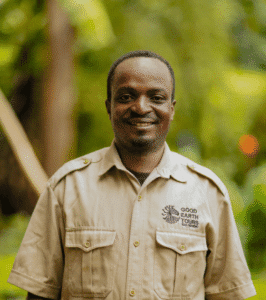
Nestory Temu
If you’re climbing Mount Kilimanjaro with Good Earth Tours, there’s a good chance you’ll meet Nestory—an experienced, energetic guide who has led countless treks to Africa’s highest peak. Known for his calm confidence, mountain knowledge, and friendly spirit, Nestory helps guests push their limits while enjoying every step of the journey. For him, guiding is more than a job—it’s a way to connect with people from around the world and share the beauty of Tanzania’s greatest summit.
What’s your favorite Kilimanjaro route to guide, and what makes it special?
Lemosho is my favorite route. It’s scenic, peaceful, and offers amazing views—you actually get to see all three Kilimanjaro summits: Shira, Mawenzi, and Kibo. Another big reason I love it is because it gives climbers a better chance to acclimatize, which really improves the odds of reaching the summit safely.
What do you love most about being a mountain guide?
I love meeting people from all over the world and sharing cultures and ideas. It’s amazing how many friendships I’ve made through guiding. Plus, the job keeps me physically fit and healthy—which is a great bonus.
Do you prefer sunrise or sunset on the mountain? Why?
Honestly, I love both. Sunrise and sunset are the best times to enjoy the view—the skies are usually clear, the light is golden, and the mountain looks absolutely breathtaking. Those quiet, glowing moments are some of the best on the entire trek.
What do you think makes Kilimanjaro different from other mountains in the world?
Kilimanjaro is one of the world’s largest free-standing mountains, and it’s covered with glaciers and ice year-round. At 5,895 meters, it’s the highest peak in Africa—but you don’t need technical climbing skills to reach the top. That makes it accessible for so many people, and that’s part of what makes it special.
What’s the best part about being part of the Good Earth Tours team?
Good Earth really stands out. The service—from guides to porters—is excellent, and there’s a real sense of teamwork and respect throughout the company. The way we support each other makes every climb a positive experience—not just for the guests, but for us too.
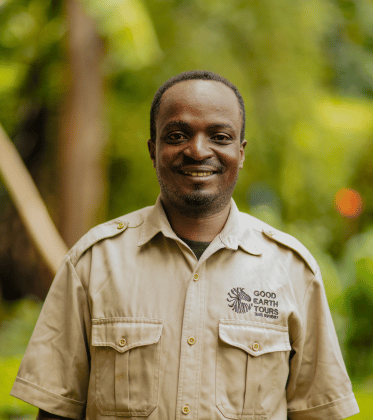
Nestory Temu
If you’re climbing Mount Kilimanjaro with Good Earth Tours, there’s a good chance you’ll meet Nestory—an experienced, energetic guide who has led countless treks to Africa’s highest peak. Known for his calm confidence, mountain knowledge, and friendly spirit, Nestory helps guests push their limits while enjoying every step of the journey. For him, guiding is more than a job—it’s a way to connect with people from around the world and share the beauty of Tanzania’s greatest summit.
What’s your favorite Kilimanjaro route to guide, and what makes it special?
Lemosho is my favorite route. It’s scenic, peaceful, and offers amazing views—you actually get to see all three Kilimanjaro summits: Shira, Mawenzi, and Kibo. Another big reason I love it is because it gives climbers a better chance to acclimatize, which really improves the odds of reaching the summit safely.
What do you love most about being a mountain guide?
I love meeting people from all over the world and sharing cultures and ideas. It’s amazing how many friendships I’ve made through guiding. Plus, the job keeps me physically fit and healthy—which is a great bonus.
Do you prefer sunrise or sunset on the mountain? Why?
Honestly, I love both. Sunrise and sunset are the best times to enjoy the view—the skies are usually clear, the light is golden, and the mountain looks absolutely breathtaking. Those quiet, glowing moments are some of the best on the entire trek.
What do you think makes Kilimanjaro different from other mountains in the world?
Kilimanjaro is one of the world’s largest free-standing mountains, and it’s covered with glaciers and ice year-round. At 5,895 meters, it’s the highest peak in Africa—but you don’t need technical climbing skills to reach the top. That makes it accessible for so many people, and that’s part of what makes it special.
What’s the best part about being part of the Good Earth Tours team?
Good Earth really stands out. The service—from guides to porters—is excellent, and there’s a real sense of teamwork and respect throughout the company. The way we support each other makes every climb a positive experience—not just for the guests, but for us too.
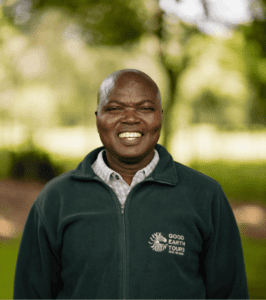
Joseph Chotta
Joseph brings a calm, observant energy to the safari experience. Whether he’s pointing out the subtle behaviors of giraffes or describing the drama of a lion-buffalo standoff, he has a way of making every sighting come alive. His guests appreciate his quiet confidence—and his eye for moments others might miss.
What’s your favorite safari animal and why?
My favorite safari animal is the giraffe. No other animal moves quite like it—ambling gracefully, with a rhythm that’s all its own. Even when they run, it’s almost like they’re floating. Watching them is like watching a living piece of art.
What’s your favorite safari memory or moment?
One moment I’ll never forget was watching a lion attempt to take down a buffalo. But instead of running, the buffalo turned and fought back. The lion had no choice but to retreat. It was a powerful reminder of how unpredictable and humbling nature can be.
What’s your favorite national park or safari destination?
Serengeti National Park is my favorite. It’s the only place where you can witness the Great Migration and also see an incredible number of lions. The sheer size of the park and the volume of wildlife make it one of the best safari destinations in the world.
What’s one local phrase or word you think every safari-goer should know?
“Kuwa Mpole” — it means “be patient.” On safari, patience is everything. Sometimes you wait, and then suddenly the bush comes alive with a moment you’ll remember forever.
Do you prefer sunrise or sunset on safari? Why?
I prefer sunrise. It’s the start of a new day, when the animals begin to stir and the light is soft and beautiful. There’s a sense of possibility in those early hours that makes every game drive feel like the beginning of a new story.
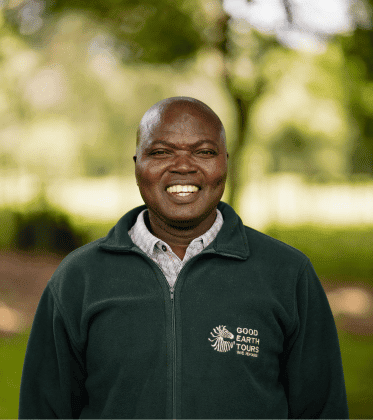
Joseph Chotta
Joseph brings a calm, observant energy to the safari experience. Whether he’s pointing out the subtle behaviors of giraffes or describing the drama of a lion-buffalo standoff, he has a way of making every sighting come alive. His guests appreciate his quiet confidence—and his eye for moments others might miss.
What’s your favorite safari animal and why?
My favorite safari animal is the giraffe. No other animal moves quite like it—ambling gracefully, with a rhythm that’s all its own. Even when they run, it’s almost like they’re floating. Watching them is like watching a living piece of art.
What’s your favorite safari memory or moment?
One moment I’ll never forget was watching a lion attempt to take down a buffalo. But instead of running, the buffalo turned and fought back. The lion had no choice but to retreat. It was a powerful reminder of how unpredictable and humbling nature can be.
What’s your favorite national park or safari destination?
Serengeti National Park is my favorite. It’s the only place where you can witness the Great Migration and also see an incredible number of lions. The sheer size of the park and the volume of wildlife make it one of the best safari destinations in the world.
What’s one local phrase or word you think every safari-goer should know?
“Kuwa Mpole” — it means “be patient.” On safari, patience is everything. Sometimes you wait, and then suddenly the bush comes alive with a moment you’ll remember forever.
Do you prefer sunrise or sunset on safari? Why?
I prefer sunrise. It’s the start of a new day, when the animals begin to stir and the light is soft and beautiful. There’s a sense of possibility in those early hours that makes every game drive feel like the beginning of a new story.
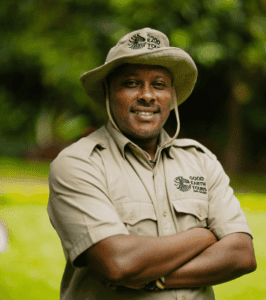
Moses Mmari
Known for his warmth, wisdom, and the occasional wildlife joke, Moses, AKA Macho, brings a blend of knowledge and heart to every safari. With a deep respect for animal behavior and a love of early mornings in the bush, he’s the kind of guide who turns game drives into unforgettable experiences.
What’s your favorite safari animal and why?
The dik-dik is my favorite animal. They may be small, but they’ve got big hearts—they pair for life and never divorce. I admire their loyalty. Plus, watching them dart through the bushes in perfect sync is always a treat for guests.
What’s your favorite national park or safari destination?
Serengeti National Park is my favorite, without question. It’s one of the largest and most iconic parks in Tanzania. You can witness the dramatic migration of wildebeest and zebras, and it offers incredible opportunities to spot all members of the Big Five. There’s also a high chance to see entire cat families—lions lounging together, leopards resting in trees, and cheetahs on the move. Every drive feels like a discovery.
What’s one thing most travelers don’t expect about going on safari?
Many people don’t realize just how close we actually get to the animals. Seeing an elephant or lion up close—not through a screen, but in real life—takes your breath away. That moment when guests realize how wild and real it all is? It never gets old.
What’s one local phrase or word you think every safari-goer should know?
Two key phrases:
“Jambo” – It’s our way of saying hello, and it’s always the first step to making guests feel welcome—especially in the early morning.
“Hakuna Matata” – It means “no worries,” and that’s how we like to keep the safari experience: relaxed, joyful, and full of good vibes.
Do you prefer sunrise or sunset on safari? Why?
I prefer sunrise. That’s when the bush really comes alive. Most animals are active, and it’s prime hunting time for the big cats. The light is also perfect for photography—soft, golden, and dramatic. There’s a quiet magic to those early hours that you just can’t find at any other time of day.
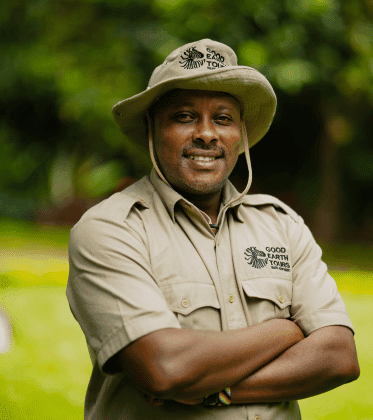
Moses Mmari
Known for his warmth, wisdom, and the occasional wildlife joke, Moses, AKA Macho, brings a blend of knowledge and heart to every safari. With a deep respect for animal behavior and a love of early mornings in the bush, he’s the kind of guide who turns game drives into unforgettable experiences.
What’s your favorite safari animal and why?
The dik-dik is my favorite animal. They may be small, but they’ve got big hearts—they pair for life and never divorce. I admire their loyalty. Plus, watching them dart through the bushes in perfect sync is always a treat for guests.
What’s your favorite national park or safari destination?
Serengeti National Park is my favorite, without question. It’s one of the largest and most iconic parks in Tanzania. You can witness the dramatic migration of wildebeest and zebras, and it offers incredible opportunities to spot all members of the Big Five. There’s also a high chance to see entire cat families—lions lounging together, leopards resting in trees, and cheetahs on the move. Every drive feels like a discovery.
What’s one thing most travelers don’t expect about going on safari?
Many people don’t realize just how close we actually get to the animals. Seeing an elephant or lion up close—not through a screen, but in real life—takes your breath away. That moment when guests realize how wild and real it all is? It never gets old.
What’s one local phrase or word you think every safari-goer should know?
Two key phrases:
“Jambo” – It’s our way of saying hello, and it’s always the first step to making guests feel welcome—especially in the early morning.
“Hakuna Matata” – It means “no worries,” and that’s how we like to keep the safari experience: relaxed, joyful, and full of good vibes.
Do you prefer sunrise or sunset on safari? Why?
I prefer sunrise. That’s when the bush really comes alive. Most animals are active, and it’s prime hunting time for the big cats. The light is also perfect for photography—soft, golden, and dramatic. There’s a quiet magic to those early hours that you just can’t find at any other time of day.

Aristides Mality
For Aristides, guiding on Kilimanjaro is more than just a job—it’s the realization of a childhood dream. With a deep love for the mountain and a natural gift for leadership, he brings energy, encouragement, and expertise to every trek. Whether he’s sharing local Swahili phrases or recounting stories from crater camp, Aristides makes each climb as memorable as the summit itself.
How did you get started in mountaineering or guiding?
When I was a little boy, I saw Kilimanjaro glowing in the distance with its white peak and asked my father what made that mountain shine. He told me I was too young to understand it just yet, but from that moment on, I knew I wanted to climb it. That dream stuck with me, and today, I get to live it every time I guide someone to the top.
What do you think makes Kilimanjaro different from other mountains in the world?
Kilimanjaro is the tallest free-standing mountain in the world—and the fact that you can summit it without needing technical gear or life-support equipment makes it incredibly unique. It’s not part of a mountain range, which makes its presence even more majestic. You’re climbing a true giant that stands alone.
What’s one local phrase or word every trekker should learn?
Learning a few local words adds so much to the experience. “Jambo” (hello) and “Pole pole” (slowly, slowly) are two of the most important. They’re part of the Kilimanjaro culture now, and hearing guests use them always brings a smile.
What’s your most unforgettable memory on the mountain?
One unforgettable memory was guiding a group of ice climbers. They trained me in ice climbing, and we spent four nights camping at crater camp—sleeping right on the snow. We climbed the Northern Ice Field and Fortungular Glacier, and even hiked into the Ashpit—the very spot where the mountain once erupted. To top it off, two members of the group ended their trip with a paraglide from the summit. That entire experience still makes me proud.
What’s one tip for someone doing their first high-altitude hike?
Train ahead of time. Go for walks, hike small hills, hit the gym—just get your body moving. And once you’re on the mountain, take it slow and steady. It’s not a race—it’s a journey.
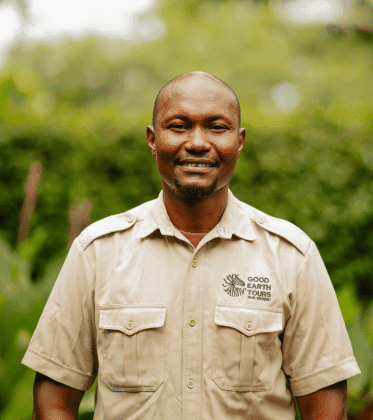
Aristides Mality
For Aristides, guiding on Kilimanjaro is more than just a job—it’s the realization of a childhood dream. With a deep love for the mountain and a natural gift for leadership, he brings energy, encouragement, and expertise to every trek. Whether he’s sharing local Swahili phrases or recounting stories from crater camp, Aristides makes each climb as memorable as the summit itself.
How did you get started in mountaineering or guiding?
When I was a little boy, I saw Kilimanjaro glowing in the distance with its white peak and asked my father what made that mountain shine. He told me I was too young to understand it just yet, but from that moment on, I knew I wanted to climb it. That dream stuck with me, and today, I get to live it every time I guide someone to the top.
What do you think makes Kilimanjaro different from other mountains in the world?
Kilimanjaro is the tallest free-standing mountain in the world—and the fact that you can summit it without needing technical gear or life-support equipment makes it incredibly unique. It’s not part of a mountain range, which makes its presence even more majestic. You’re climbing a true giant that stands alone.
What’s one local phrase or word every trekker should learn?
Learning a few local words adds so much to the experience. “Jambo” (hello) and “Pole pole” (slowly, slowly) are two of the most important. They’re part of the Kilimanjaro culture now, and hearing guests use them always brings a smile.
What’s your most unforgettable memory on the mountain?
One unforgettable memory was guiding a group of ice climbers. They trained me in ice climbing, and we spent four nights camping at crater camp—sleeping right on the snow. We climbed the Northern Ice Field and Fortungular Glacier, and even hiked into the Ashpit—the very spot where the mountain once erupted. To top it off, two members of the group ended their trip with a paraglide from the summit. That entire experience still makes me proud.
What’s one tip for someone doing their first high-altitude hike?
Train ahead of time. Go for walks, hike small hills, hit the gym—just get your body moving. And once you’re on the mountain, take it slow and steady. It’s not a race—it’s a journey.
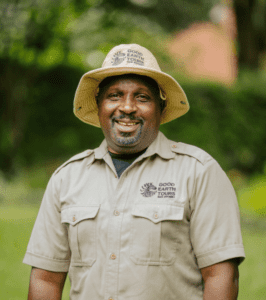
Fadhili Komba
Fadhili brings a thoughtful, reflective presence to every safari. His love for the land runs deep, and his guiding style encourages guests to slow down and truly take in the beauty around them. Known for his calm demeanor, poetic insights, and knack for spotting animals in just the right light, Fadhili helps guests connect with nature in a meaningful, lasting way.
What’s your favorite safari animal and why?
I’ve always felt a strong connection to elephants. There’s something truly majestic about these gentle giants—the way they move with quiet grace, their deep family bonds, and that air of ancient wisdom they seem to carry. Watching them roam freely in the open savanna reminds me that there’s much to learn from nature’s slow and steady pace.
What’s your favorite national park or safari destination?
Serengeti—without question. The endless plains are full of surprises, and there’s never a dull moment. No matter where you are in the park, there’s always something to see. The Great Migration is especially breathtaking—it’s raw, powerful, and humbling all at once. Being in the Serengeti feels like stepping into a living epic.
What’s your most memorable wildlife sighting?
One moment I’ll never forget was seeing a lion lounging in the golden light of dusk. Everything about the scene—the silence, the earthy colors, the stillness—felt like a living painting. It reminded me how wildlife, in its quietest moments, can be the most powerful.
Do you prefer sunrise or sunset on safari? Why?
Sunset wins me over every time. There’s something deeply romantic and reflective about how the day ends in the bush. The sky glows in brilliant shades of orange and pink, and predators start becoming active again. It’s a perfect mix of beauty and suspense.
What’s one tip for travelers visiting Africa for the first time?
Bring your sense of adventure—and a little patience. Nature moves at its own pace here. When you embrace the unexpected, you open yourself up to experiences that no itinerary could ever plan. Africa rewards those who are willing to slow down and soak it all in.
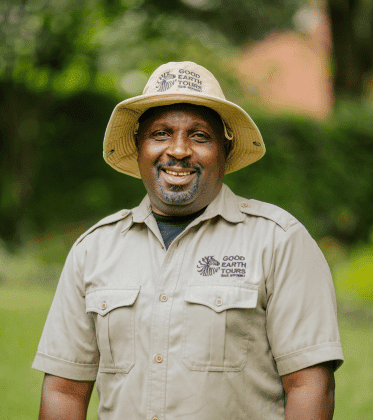
Fadhili Komba
Fadhili brings a thoughtful, reflective presence to every safari. His love for the land runs deep, and his guiding style encourages guests to slow down and truly take in the beauty around them. Known for his calm demeanor, poetic insights, and knack for spotting animals in just the right light, Fadhili helps guests connect with nature in a meaningful, lasting way.
What’s your favorite safari animal and why?
I’ve always felt a strong connection to elephants. There’s something truly majestic about these gentle giants—the way they move with quiet grace, their deep family bonds, and that air of ancient wisdom they seem to carry. Watching them roam freely in the open savanna reminds me that there’s much to learn from nature’s slow and steady pace.
What’s your favorite national park or safari destination?
Serengeti—without question. The endless plains are full of surprises, and there’s never a dull moment. No matter where you are in the park, there’s always something to see. The Great Migration is especially breathtaking—it’s raw, powerful, and humbling all at once. Being in the Serengeti feels like stepping into a living epic.
What’s your most memorable wildlife sighting?
One moment I’ll never forget was seeing a lion lounging in the golden light of dusk. Everything about the scene—the silence, the earthy colors, the stillness—felt like a living painting. It reminded me how wildlife, in its quietest moments, can be the most powerful.
Do you prefer sunrise or sunset on safari? Why?
Sunset wins me over every time. There’s something deeply romantic and reflective about how the day ends in the bush. The sky glows in brilliant shades of orange and pink, and predators start becoming active again. It’s a perfect mix of beauty and suspense.
What’s one tip for travelers visiting Africa for the first time?
Bring your sense of adventure—and a little patience. Nature moves at its own pace here. When you embrace the unexpected, you open yourself up to experiences that no itinerary could ever plan. Africa rewards those who are willing to slow down and soak it all in.
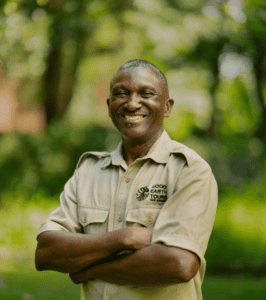
Raphael Njovu
With a quick wit and a deep love for wildlife, Raphael brings both laughter and knowledge to every safari. Whether he’s spotting big cats in the Serengeti or sharing stories by the fire, guests often say Raphael is as unforgettable as the landscapes he guides them through.
What’s your favorite safari animal and why?
Hyenas are my favorite safari animals. They’re fascinating creatures—not just for their unique behaviors, but also for the important role they play in the ecosystem. Hyenas are nature’s clean-up crew, making sure no carcass goes to waste and keeping the environment balanced. Plus, their giggles around the campfire at night? That sound always makes guests laugh. It’s one of those special safari experiences you don’t forget.
What’s your favorite safari memory or moment?
One of the most incredible things I’ve witnessed was a leopard hunting a python. The python had just eaten, and the leopard tried three times to carry it up a tree but couldn’t manage it. Eventually, he just placed it down on a branch. It was a rare sight—two powerful predators crossing paths, and a true reminder of the wild’s unpredictability.
How did you get started in the travel or safari industry?
It started with a love for travel. After visiting several national parks across Tanzania, I knew this was the kind of work I wanted to do—exploring nature, meeting people from all over the world, and sharing the beauty of our country with them.
What’s your favorite national park or safari destination?
Serengeti and Tarangire are my top two. Both parks are vast and full of life. I love the open grasslands, the rock outcrops (kopjes), the variety of wildlife, and especially the presence of big cats. Every visit brings something new.
Do you prefer sunrise or sunset on safari? Why?
Sunset is my favorite. I love the golden colors and the changing light as the day ends. There’s something magical about that moment—the way the landscape glows and the animals settle in. It’s peaceful and dramatic at the same time.
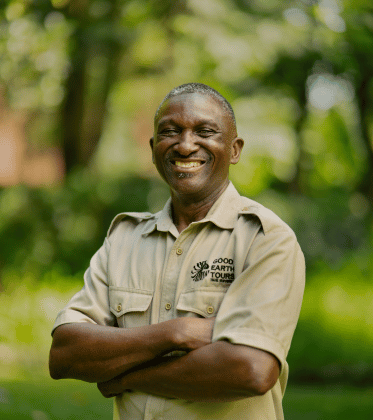
Raphael Njovu
With a quick wit and a deep love for wildlife, Raphael brings both laughter and knowledge to every safari. Whether he’s spotting big cats in the Serengeti or sharing stories by the fire, guests often say Raphael is as unforgettable as the landscapes he guides them through.
What’s your favorite safari animal and why?
Hyenas are my favorite safari animals. They’re fascinating creatures—not just for their unique behaviors, but also for the important role they play in the ecosystem. Hyenas are nature’s clean-up crew, making sure no carcass goes to waste and keeping the environment balanced. Plus, their giggles around the campfire at night? That sound always makes guests laugh. It’s one of those special safari experiences you don’t forget.
What’s your favorite safari memory or moment?
One of the most incredible things I’ve witnessed was a leopard hunting a python. The python had just eaten, and the leopard tried three times to carry it up a tree but couldn’t manage it. Eventually, he just placed it down on a branch. It was a rare sight—two powerful predators crossing paths, and a true reminder of the wild’s unpredictability.
How did you get started in the travel or safari industry?
It started with a love for travel. After visiting several national parks across Tanzania, I knew this was the kind of work I wanted to do—exploring nature, meeting people from all over the world, and sharing the beauty of our country with them.
What’s your favorite national park or safari destination?
Serengeti and Tarangire are my top two. Both parks are vast and full of life. I love the open grasslands, the rock outcrops (kopjes), the variety of wildlife, and especially the presence of big cats. Every visit brings something new.
Do you prefer sunrise or sunset on safari? Why?
Sunset is my favorite. I love the golden colors and the changing light as the day ends. There’s something magical about that moment—the way the landscape glows and the animals settle in. It’s peaceful and dramatic at the same time.
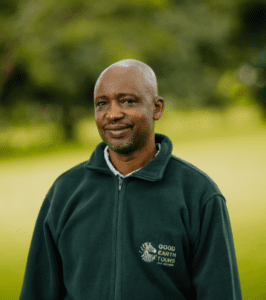
Elieza George
Elieza is a sharp-eyed guide with a deep respect for nature’s balance and a special admiration for the stealthy and self-reliant leopard. With years of experience guiding guests through Tanzania’s wildest corners, Elieza brings calm, focus, and plenty of fascinating stories to each safari.
What’s your favorite safari animal and why?
The leopard is my favorite safari animal. It’s solitary, extremely clean, and doesn’t share its prey with other animals. I admire its independence and strength—it’s a quiet but powerful presence in the bush.
What’s on your personal travel bucket list?
I’d love to visit some countries in Europe and also explore the United States. Seeing different parts of the world and how people live is something that really excites me.
What’s your favorite national park or safari destination?
My favorite is Serengeti National Park. It’s massive, full of diverse wildlife and landscapes, and home to the famous Great Migration. The open plains, the variety of nature, and the dramatic rock formations—known as kopjes—all make Serengeti an unforgettable place.
What’s one local phrase or word you think every safari-goer should know?
I’d say two phrases: “Hakuna Matata,” which means “no worries,” and “Milele,” which means “forever.” Both capture the spirit of being on safari—peaceful, timeless, and full of wonder.
What’s your most memorable wildlife sighting?
Once, I saw a leopard make a kill and carry it up into a tree. But the story didn’t end there. A lion followed the leopard up the tree, trying to steal the meal. The leopard moved out onto the lighter branches and dropped a small piece of the prey as a distraction. The lion took what was left—but then dropped it from the tree, and hyenas quickly claimed it. In the end, the lion lost the meal. It was a powerful reminder of how competitive—and unpredictable—life in the wild can be.
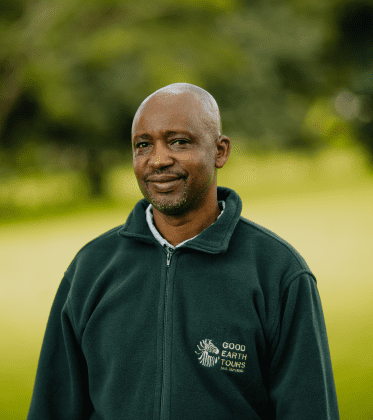
Elieza George
Elieza is a sharp-eyed guide with a deep respect for nature’s balance and a special admiration for the stealthy and self-reliant leopard. With years of experience guiding guests through Tanzania’s wildest corners, Elieza brings calm, focus, and plenty of fascinating stories to each safari.
What’s your favorite safari animal and why?
The leopard is my favorite safari animal. It’s solitary, extremely clean, and doesn’t share its prey with other animals. I admire its independence and strength—it’s a quiet but powerful presence in the bush.
What’s on your personal travel bucket list?
I’d love to visit some countries in Europe and also explore the United States. Seeing different parts of the world and how people live is something that really excites me.
What’s your favorite national park or safari destination?
My favorite is Serengeti National Park. It’s massive, full of diverse wildlife and landscapes, and home to the famous Great Migration. The open plains, the variety of nature, and the dramatic rock formations—known as kopjes—all make Serengeti an unforgettable place.
What’s one local phrase or word you think every safari-goer should know?
I’d say two phrases: “Hakuna Matata,” which means “no worries,” and “Milele,” which means “forever.” Both capture the spirit of being on safari—peaceful, timeless, and full of wonder.
What’s your most memorable wildlife sighting?
Once, I saw a leopard make a kill and carry it up into a tree. But the story didn’t end there. A lion followed the leopard up the tree, trying to steal the meal. The leopard moved out onto the lighter branches and dropped a small piece of the prey as a distraction. The lion took what was left—but then dropped it from the tree, and hyenas quickly claimed it. In the end, the lion lost the meal. It was a powerful reminder of how competitive—and unpredictable—life in the wild can be.
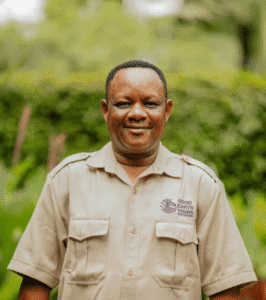
Edward Mollel
With a quiet confidence and deep respect for the natural world, Edward brings a grounded and insightful presence to every game drive. Known for his storytelling and steady guiding style, Edward helps guests slow down, soak in the landscape, and appreciate the magic of every moment—whether it’s a lone elephant or a pride of lions basking in the morning sun.
What’s your favorite safari animal and why?
The elephant is my favorite. They’re intelligent, social, and incredibly majestic. Watching them move through the bush with such calm and quiet power is always a highlight. They remind me of how peaceful and wise the natural world can be.
What’s your favorite safari memory or moment?
One early morning in the Serengeti, we found a pride of lions resting on a kopje, perfectly lit by the golden glow of sunrise. There was complete silence, except for a soft morning breeze. That view, that stillness—it’s a moment I’ll never forget.
What do you love most about helping people plan safaris?
I love seeing that spark in people’s eyes when they realize this isn’t just a vacation—it’s a dream come true. Being part of that transformation, from dream to reality, is something I never take for granted.
What’s one local phrase or word you think every safari-goer should know?
Pole pole means “slowly, slowly.” It’s more than just a phrase—it’s a way of life out here. On safari, slowing down helps you see more, feel more, and really connect with the experience.
Do you prefer sunrise or sunset on safari? Why?
I prefer sunset. The colors in the sky, the sounds of animals settling down, and birds calling out as night begins—it all creates a peaceful, reflective atmosphere that’s hard to describe but easy to fall in love with.
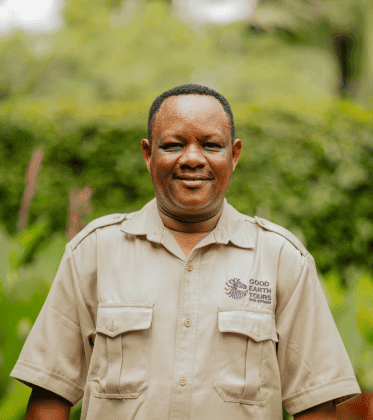
Edward Mollel
With a quiet confidence and deep respect for the natural world, Edward brings a grounded and insightful presence to every game drive. Known for his storytelling and steady guiding style, Edward helps guests slow down, soak in the landscape, and appreciate the magic of every moment—whether it’s a lone elephant or a pride of lions basking in the morning sun.
What’s your favorite safari animal and why?
The elephant is my favorite. They’re intelligent, social, and incredibly majestic. Watching them move through the bush with such calm and quiet power is always a highlight. They remind me of how peaceful and wise the natural world can be.
What’s your favorite safari memory or moment?
One early morning in the Serengeti, we found a pride of lions resting on a kopje, perfectly lit by the golden glow of sunrise. There was complete silence, except for a soft morning breeze. That view, that stillness—it’s a moment I’ll never forget.
What do you love most about helping people plan safaris?
I love seeing that spark in people’s eyes when they realize this isn’t just a vacation—it’s a dream come true. Being part of that transformation, from dream to reality, is something I never take for granted.
What’s one local phrase or word you think every safari-goer should know?
Pole pole means “slowly, slowly.” It’s more than just a phrase—it’s a way of life out here. On safari, slowing down helps you see more, feel more, and really connect with the experience.
Do you prefer sunrise or sunset on safari? Why?
I prefer sunset. The colors in the sky, the sounds of animals settling down, and birds calling out as night begins—it all creates a peaceful, reflective atmosphere that’s hard to describe but easy to fall in love with.
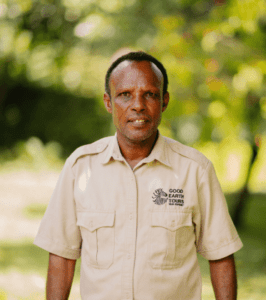
Abdul Dattoo
Born and raised near Tarangire National Park, Abdul brings both passion and firsthand experience to every safari he leads. With a background that blends mechanical training and formal wildlife education, Abdul is known for his calm presence, sharp eye for spotting predators, and storytelling that brings the bush to life. For Abdul, guiding isn’t just a job—it’s a calling rooted in childhood walks alongside wild animals.
What’s your favorite safari animal and why?
The cheetah is my favorite safari animal. It’s the fastest land carnivore in Africa and a fascinating predator with unique traits. Each cheetah has a one-of-a-kind spot pattern, which makes it easy to identify individuals. Interestingly, the cheetah isn’t a true cat—it’s somewhere between a cat and a dog, with paws like a dog but hunting skills more similar to lions and leopards. Their speed and stealth always amaze me.
What’s your favorite safari memory or moment?
One of my most unforgettable moments was during a Serengeti game drive. I found three lionesses and nine cubs resting under a tree, with another lioness perched above. A large herd of buffalo had surrounded them. We waited for 45 minutes, hoping to witness something dramatic, but nothing happened—so we drove off for lunch. Afterward, we returned to find the lionesses in action. They were hunting, and within an hour and a half, they brought down a buffalo—something usually requiring a group of ten lions. It was a powerful and rare moment to witness with my guests.
How did you get started in the travel or safari industry?
Growing up in a village that borders Tarangire National Park, I was surrounded by wildlife from a young age. We used to walk to school in groups because we’d often see giraffes, zebras, or even hunting dogs on the way. After finishing primary school, I moved to Arusha and later studied mechanics in Moshi. While working temporarily at Fig Camp in Lake Manyara, I realized I wanted to be a guide. That’s when I decided to go to wildlife college in Arusha. Since then, I’ve gained hands-on experience with different companies and never stopped learning.
What’s your favorite national park or safari destination?
Tarangire National Park will always be my favorite. It has everything—baobab trees, rivers, swamps, hills, and a high concentration of elephants and predators. The ecosystem changes dramatically between the dry and rainy seasons, making it a dynamic park year-round. It’s also part of my home area, so it holds personal meaning for me.
Do you prefer sunrise or sunset on safari? Why?
I honestly love both. Sunrise is perfect for spotting predators on the move and offers incredible colors for photography. Sunset is equally special—the golden light, silhouettes of trees, and the way animals begin to stir again after resting. Both moments offer magic—you just have to be there to feel it.
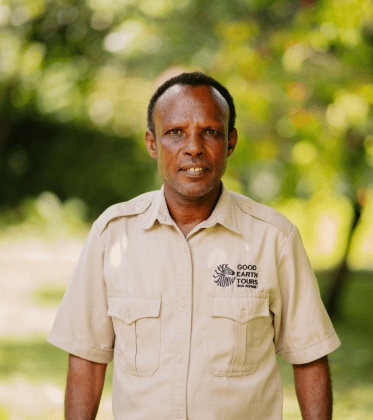
Abdul Dattoo
Born and raised near Tarangire National Park, Abdul brings both passion and firsthand experience to every safari he leads. With a background that blends mechanical training and formal wildlife education, Abdul is known for his calm presence, sharp eye for spotting predators, and storytelling that brings the bush to life. For Abdul, guiding isn’t just a job—it’s a calling rooted in childhood walks alongside wild animals.
What’s your favorite safari animal and why?
The cheetah is my favorite safari animal. It’s the fastest land carnivore in Africa and a fascinating predator with unique traits. Each cheetah has a one-of-a-kind spot pattern, which makes it easy to identify individuals. Interestingly, the cheetah isn’t a true cat—it’s somewhere between a cat and a dog, with paws like a dog but hunting skills more similar to lions and leopards. Their speed and stealth always amaze me.
What’s your favorite safari memory or moment?
One of my most unforgettable moments was during a Serengeti game drive. I found three lionesses and nine cubs resting under a tree, with another lioness perched above. A large herd of buffalo had surrounded them. We waited for 45 minutes, hoping to witness something dramatic, but nothing happened—so we drove off for lunch. Afterward, we returned to find the lionesses in action. They were hunting, and within an hour and a half, they brought down a buffalo—something usually requiring a group of ten lions. It was a powerful and rare moment to witness with my guests.
How did you get started in the travel or safari industry?
Growing up in a village that borders Tarangire National Park, I was surrounded by wildlife from a young age. We used to walk to school in groups because we’d often see giraffes, zebras, or even hunting dogs on the way. After finishing primary school, I moved to Arusha and later studied mechanics in Moshi. While working temporarily at Fig Camp in Lake Manyara, I realized I wanted to be a guide. That’s when I decided to go to wildlife college in Arusha. Since then, I’ve gained hands-on experience with different companies and never stopped learning.
What’s your favorite national park or safari destination?
Tarangire National Park will always be my favorite. It has everything—baobab trees, rivers, swamps, hills, and a high concentration of elephants and predators. The ecosystem changes dramatically between the dry and rainy seasons, making it a dynamic park year-round. It’s also part of my home area, so it holds personal meaning for me.
Do you prefer sunrise or sunset on safari? Why?
I honestly love both. Sunrise is perfect for spotting predators on the move and offers incredible colors for photography. Sunset is equally special—the golden light, silhouettes of trees, and the way animals begin to stir again after resting. Both moments offer magic—you just have to be there to feel it.
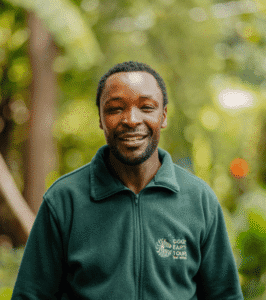
Paul Mosha
Paul is one of those rare guides who make climbing Africa’s tallest mountain feel both exciting and achievable. With a deep understanding of the mountain’s rhythms and a warm, grounded approach, Paul knows how to pace a climb for success—and how to keep the spirit of adventure alive even when the summit feels far away.
What’s your favorite Kilimanjaro route to guide?
I love guiding the Lemosho Route. It’s one of the most beautiful paths on Kilimanjaro. It’s an eight-day trek, which gives climbers plenty of time to acclimatize properly. Plus, the scenery is incredible—you get the full range of landscapes, from forests to open plains to the glaciers near the top.
What is one myth or misconception people have about climbing Kilimanjaro?
Some people think guiding on Kilimanjaro—or even climbing it—is a “last resort” job, something you do after failing at other careers. That’s completely wrong. Guiding here takes skill, passion, and deep knowledge. It’s a proud and serious profession.
What do you think makes Kilimanjaro different from other mountains in the world?
Kilimanjaro is special because it’s a free-standing mountain—you’re climbing a single giant, not part of a range. In just a few days, you pass through multiple climate zones: cultivated land, lush forest, rocky desert, and icy Arctic. It’s like traveling through different parts of the world without ever leaving the mountain.
What’s one local phrase or word you think every safari-goer or trekker should know?
Ahsante Sana—it means “thank you very much.” It’s polite, humble, and always appreciated. A simple thank you goes a long way, whether you’re on the trail or around town.
What’s one piece of gear you always recommend to Kilimanjaro climbers?
A good down jacket. Temperatures drop quickly as you climb higher, and a reliable, warm jacket can make all the difference between being uncomfortable and staying strong for summit day.

Paul Mosha
Paul is one of those rare guides who make climbing Africa’s tallest mountain feel both exciting and achievable. With a deep understanding of the mountain’s rhythms and a warm, grounded approach, Paul knows how to pace a climb for success—and how to keep the spirit of adventure alive even when the summit feels far away.
What’s your favorite Kilimanjaro route to guide?
I love guiding the Lemosho Route. It’s one of the most beautiful paths on Kilimanjaro. It’s an eight-day trek, which gives climbers plenty of time to acclimatize properly. Plus, the scenery is incredible—you get the full range of landscapes, from forests to open plains to the glaciers near the top.
What is one myth or misconception people have about climbing Kilimanjaro?
Some people think guiding on Kilimanjaro—or even climbing it—is a “last resort” job, something you do after failing at other careers. That’s completely wrong. Guiding here takes skill, passion, and deep knowledge. It’s a proud and serious profession.
What do you think makes Kilimanjaro different from other mountains in the world?
Kilimanjaro is special because it’s a free-standing mountain—you’re climbing a single giant, not part of a range. In just a few days, you pass through multiple climate zones: cultivated land, lush forest, rocky desert, and icy Arctic. It’s like traveling through different parts of the world without ever leaving the mountain.
What’s one local phrase or word you think every safari-goer or trekker should know?
Ahsante Sana—it means “thank you very much.” It’s polite, humble, and always appreciated. A simple thank you goes a long way, whether you’re on the trail or around town.
What’s one piece of gear you always recommend to Kilimanjaro climbers?
A good down jacket. Temperatures drop quickly as you climb higher, and a reliable, warm jacket can make all the difference between being uncomfortable and staying strong for summit day.
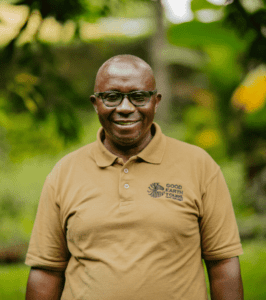
Abubakar Hatibu
Abubakar’s calm presence and passion for the wild make him a guest favorite. With a deep love for wildlife—especially the often-overlooked dik-dik—and a sharp eye for photographic moments, he brings a quiet appreciation for nature’s rhythms to every safari. For Abubakar, guiding is more than a job—it’s a lifelong dream fulfilled.
What’s your favorite safari memory or moment?
Watching the wildebeest and zebras crossing the Mara River is something I’ll never forget. It’s dramatic, powerful, and full of emotion. The anticipation, the sound of hooves, the tension of the river—it’s one of nature’s greatest shows.
How did you get started in the travel or safari industry?
This has been my passion since I was young. Growing up surrounded by nature, I always knew I wanted to work in the safari world—and I feel grateful every day that I get to do what I love.
What’s your favorite national park or safari destination?
Ngorongoro Crater is my favorite. It feels like something man-made because it’s so perfectly formed—but it’s all natural. The landscape is breathtaking, especially the lake full of flamingoes. And the variety of animals, rivers, and swamps all in one area makes it incredibly special.
Do you prefer sunrise or sunset on safari? Why?
I prefer sunrise. The light is soft and beautiful—perfect for photography. It’s also when the animals are most active, and the stillness of the morning gives everything a peaceful, almost sacred feeling.
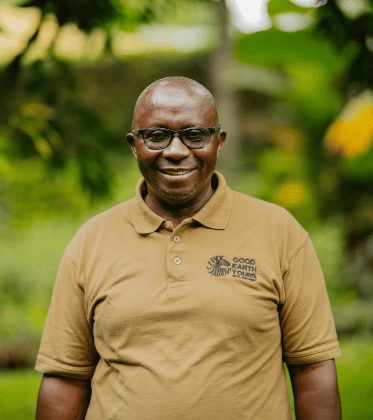
Abubakar Hatibu
Abubakar’s calm presence and passion for the wild make him a guest favorite. With a deep love for wildlife—especially the often-overlooked dik-dik—and a sharp eye for photographic moments, he brings a quiet appreciation for nature’s rhythms to every safari. For Abubakar, guiding is more than a job—it’s a lifelong dream fulfilled.
What’s your favorite safari memory or moment?
Watching the wildebeest and zebras crossing the Mara River is something I’ll never forget. It’s dramatic, powerful, and full of emotion. The anticipation, the sound of hooves, the tension of the river—it’s one of nature’s greatest shows.
How did you get started in the travel or safari industry?
This has been my passion since I was young. Growing up surrounded by nature, I always knew I wanted to work in the safari world—and I feel grateful every day that I get to do what I love.
What’s your favorite national park or safari destination?
Ngorongoro Crater is my favorite. It feels like something man-made because it’s so perfectly formed—but it’s all natural. The landscape is breathtaking, especially the lake full of flamingoes. And the variety of animals, rivers, and swamps all in one area makes it incredibly special.
Do you prefer sunrise or sunset on safari? Why?
I prefer sunrise. The light is soft and beautiful—perfect for photography. It’s also when the animals are most active, and the stillness of the morning gives everything a peaceful, almost sacred feeling.
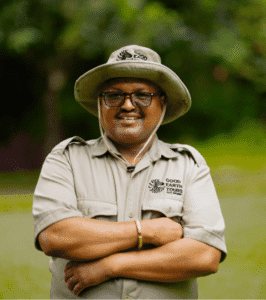
George Isaay
George brings patience, curiosity, and a deep local connection to every safari he guides. Having grown up near Lake Manyara, he developed a love for wildlife and guiding from an early age. With his relaxed demeanor and appreciation for even the muddiest parts of the journey, George helps guests enjoy the full safari experience—from unexpected road conditions to golden sunset sightings.
What’s your favorite safari animal and why?
The hippopotamus is my favorite. I love how they live in groups—what we call a “school” of hippos—for safety and protection. They might seem calm when floating in the water, but they’re fascinating animals with strong social bonds and a lot of personality if you take the time to watch them.
How did you get started in the travel or safari industry?
It’s something I dreamed about since I was young. Growing up near Lake Manyara, I was always surrounded by wildlife and natural beauty. That environment shaped my path and inspired me to become a safari guide.
What’s your favorite national park or safari destination?
Lake Manyara National Park is my favorite. It’s close to my heart, not only because I grew up nearby, but because of its beautiful landscape and diverse wildlife. It might be smaller than some parks, but it always delivers something special.
What’s one thing most travelers don’t expect about going on safari?
People are often surprised by the driving conditions. It’s not always smooth—there are bumpy roads, muddy patches, and the occasional moment where we get stuck and have to problem-solve. But honestly, that’s part of the fun and adventure.
Do you prefer sunrise or sunset on safari? Why?
I prefer sunset. It’s the time when the day slows down, the lighting is perfect for photography, and predators like lions, leopards, and cheetahs start becoming active again. It’s a calm but exciting window of time in the bush.
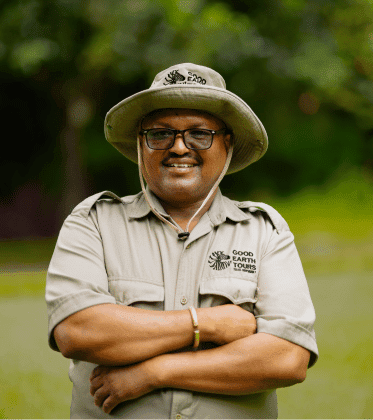
George Isaay
George brings patience, curiosity, and a deep local connection to every safari he guides. Having grown up near Lake Manyara, he developed a love for wildlife and guiding from an early age. With his relaxed demeanor and appreciation for even the muddiest parts of the journey, George helps guests enjoy the full safari experience—from unexpected road conditions to golden sunset sightings.
What’s your favorite safari animal and why?
The hippopotamus is my favorite. I love how they live in groups—what we call a “school” of hippos—for safety and protection. They might seem calm when floating in the water, but they’re fascinating animals with strong social bonds and a lot of personality if you take the time to watch them.
How did you get started in the travel or safari industry?
It’s something I dreamed about since I was young. Growing up near Lake Manyara, I was always surrounded by wildlife and natural beauty. That environment shaped my path and inspired me to become a safari guide.
What’s your favorite national park or safari destination?
Lake Manyara National Park is my favorite. It’s close to my heart, not only because I grew up nearby, but because of its beautiful landscape and diverse wildlife. It might be smaller than some parks, but it always delivers something special.
What’s one thing most travelers don’t expect about going on safari?
People are often surprised by the driving conditions. It’s not always smooth—there are bumpy roads, muddy patches, and the occasional moment where we get stuck and have to problem-solve. But honestly, that’s part of the fun and adventure.
Do you prefer sunrise or sunset on safari? Why?
I prefer sunset. It’s the time when the day slows down, the lighting is perfect for photography, and predators like lions, leopards, and cheetahs start becoming active again. It’s a calm but exciting window of time in the bush.
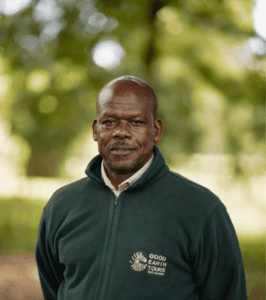
Ben Morembwa
Meet Ben M, A.K.A Bushman! Ben has been guiding guests through Tanzania’s iconic parks for years, bringing both expertise and a calm, observant presence to every game drive. Known for his deep respect for wildlife and his love of Tarangire’s vast landscapes, Ben is a guide who finds meaning in the quiet moments just as much as the action-packed ones.
What’s your favorite safari animal and why?
My favorite safari animal is the elephant. It’s the largest of the Big Five, and every time I see one in the wild, I’m struck by its strength, intelligence, and calm presence. They move through the bush with such quiet confidence—it’s something you never get tired of witnessing.
What’s your favorite national park or safari destination?
Tarangire National Park is at the top of my list. It’s packed with wildlife, but what makes it truly special are the landscapes—ridges, swamps, and the Tarangire River, which flows all year. That river draws in huge herds of elephants and creates some incredible game viewing no matter the season.
What’s your most memorable wildlife sighting?
One that stands out was watching buffalo at the riverbank. I had been observing them for a while when suddenly a crocodile burst from the water in an attempt to hunt. It’s moments like that—where everything changes in an instant—that remind you how unpredictable and thrilling nature can be.
What’s the best part about being part of the Good Earth Tours team?
The camaraderie. We work as a team, support one another, and share knowledge and experiences that make each of us better at what we do. It’s a great group of people, and being part of a team like this makes every day in the bush even more rewarding.
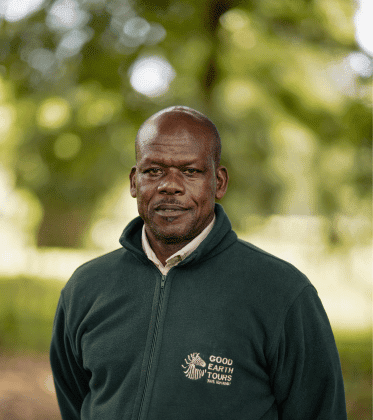
Ben Morembwa
Meet Ben M, A.K.A Bushman! Ben has been guiding guests through Tanzania’s iconic parks for years, bringing both expertise and a calm, observant presence to every game drive. Known for his deep respect for wildlife and his love of Tarangire’s vast landscapes, Ben is a guide who finds meaning in the quiet moments just as much as the action-packed ones.
What’s your favorite safari animal and why?
My favorite safari animal is the elephant. It’s the largest of the Big Five, and every time I see one in the wild, I’m struck by its strength, intelligence, and calm presence. They move through the bush with such quiet confidence—it’s something you never get tired of witnessing.
What’s your favorite national park or safari destination?
Tarangire National Park is at the top of my list. It’s packed with wildlife, but what makes it truly special are the landscapes—ridges, swamps, and the Tarangire River, which flows all year. That river draws in huge herds of elephants and creates some incredible game viewing no matter the season.
What’s your most memorable wildlife sighting?
One that stands out was watching buffalo at the riverbank. I had been observing them for a while when suddenly a crocodile burst from the water in an attempt to hunt. It’s moments like that—where everything changes in an instant—that remind you how unpredictable and thrilling nature can be.
What’s the best part about being part of the Good Earth Tours team?
The camaraderie. We work as a team, support one another, and share knowledge and experiences that make each of us better at what we do. It’s a great group of people, and being part of a team like this makes every day in the bush even more rewarding.
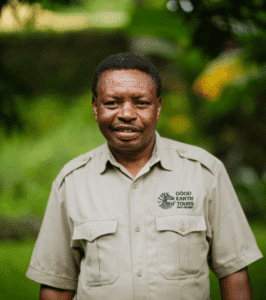
Abdi Said
Abdi is a guide who brings energy, pride, and deep local knowledge to every safari. Guests love his clear passion for the land, his respect for wildlife, and his ability to make every drive feel like a front-row seat to nature’s greatest show. Whether it’s the roar of a lion or the quiet beauty of a grazing herd, Abdi knows how to make every moment unforgettable.
What’s your favorite safari animal and why?
Lions are my favorite. I admire how they live—protecting their territory and hunting with strategy and strength. Watching them in action is always thrilling.
What’s on your personal travel bucket list?
One day, I’d love to visit America. It’s been on my list for a long time.
What’s your favorite national park or safari destination?
Tarangire National Park is my favorite. During the summer months, it becomes a gathering place for large herds of elephants. The landscape feels different from any other park, and there’s always something exciting happening.
What’s one thing most travelers don’t expect about going on safari?
Most visitors are surprised by how truly wild and raw the experience is. Watching animals hunt, graze, and move freely in their natural habitat is something they’ve only seen on TV before. They’re also amazed to see the Maasai people living side-by-side with wildlife in Ngorongoro, and to witness the scale of the Great Migration with millions of wildebeest on the move.

Abdi Said
Abdi is a guide who brings energy, pride, and deep local knowledge to every safari. Guests love his clear passion for the land, his respect for wildlife, and his ability to make every drive feel like a front-row seat to nature’s greatest show. Whether it’s the roar of a lion or the quiet beauty of a grazing herd, Abdi knows how to make every moment unforgettable.
What’s your favorite safari animal and why?
Lions are my favorite. I admire how they live—protecting their territory and hunting with strategy and strength. Watching them in action is always thrilling.
What’s on your personal travel bucket list?
One day, I’d love to visit America. It’s been on my list for a long time.
What’s your favorite national park or safari destination?
Tarangire National Park is my favorite. During the summer months, it becomes a gathering place for large herds of elephants. The landscape feels different from any other park, and there’s always something exciting happening.
What’s one thing most travelers don’t expect about going on safari?
Most visitors are surprised by how truly wild and raw the experience is. Watching animals hunt, graze, and move freely in their natural habitat is something they’ve only seen on TV before. They’re also amazed to see the Maasai people living side-by-side with wildlife in Ngorongoro, and to witness the scale of the Great Migration with millions of wildebeest on the move.
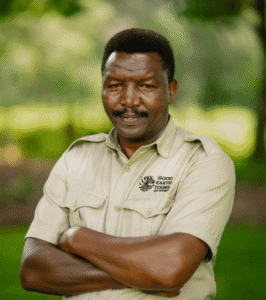
Prosper Simbo
Prosper brings a steady presence and a sharp eye to every safari he leads. With a deep admiration for elephants and a passion for storytelling, Prosper helps guests experience both the quiet beauty and the wild intensity of Tanzania’s parks. Whether he’s spotting lions at sunrise or sharing Swahili phrases to break the ice, he makes every moment meaningful.
What’s your favorite safari animal and why?
The elephant is my favorite safari animal. It’s the largest and heaviest land animal—and one of the most intelligent. They live in close family groups, have strong memories, and share many emotional traits with humans. Watching them interact always reminds me how connected we are to the natural world.
What’s your favorite national park or safari destination?
Tarangire National Park is my favorite. The landscape is stunning, and it’s one of the best places to see large herds of elephants. Every visit brings something new.
What’s one local phrase or word you think every safari-goer should know?
Greetings are very important here. Simple Swahili words like “Jambo” (hello), “Habari” (how are you?), and “Asante” (thank you) go a long way in connecting with locals.
What’s your most memorable wildlife sighting?
One moment that stands out happened in Ngorongoro Crater. I watched four lionesses battle a large bull buffalo for over four hours. It was intense and exhausting to witness—but unbelievably, the buffalo survived. He walked away, injured but victorious. It was a powerful reminder of the unpredictability and strength found in nature.
Do you prefer sunrise or sunset on safari? Why?
I enjoy both sunrise and sunset. These are the best times for photography—when the light is soft and golden—and when animals are most active. Mornings bring the excitement of a new day, while evenings offer that quiet, dramatic glow that makes every drive feel cinematic.
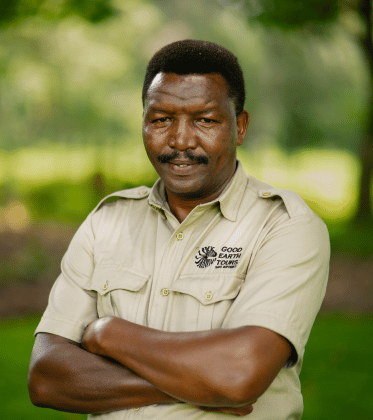
Prosper Simbo
Prosper brings a steady presence and a sharp eye to every safari he leads. With a deep admiration for elephants and a passion for storytelling, Prosper helps guests experience both the quiet beauty and the wild intensity of Tanzania’s parks. Whether he’s spotting lions at sunrise or sharing Swahili phrases to break the ice, he makes every moment meaningful.
What’s your favorite safari animal and why?
The elephant is my favorite safari animal. It’s the largest and heaviest land animal—and one of the most intelligent. They live in close family groups, have strong memories, and share many emotional traits with humans. Watching them interact always reminds me how connected we are to the natural world.
What’s your favorite national park or safari destination?
Tarangire National Park is my favorite. The landscape is stunning, and it’s one of the best places to see large herds of elephants. Every visit brings something new.
What’s one local phrase or word you think every safari-goer should know?
Greetings are very important here. Simple Swahili words like “Jambo” (hello), “Habari” (how are you?), and “Asante” (thank you) go a long way in connecting with locals.
What’s your most memorable wildlife sighting?
One moment that stands out happened in Ngorongoro Crater. I watched four lionesses battle a large bull buffalo for over four hours. It was intense and exhausting to witness—but unbelievably, the buffalo survived. He walked away, injured but victorious. It was a powerful reminder of the unpredictability and strength found in nature.
Do you prefer sunrise or sunset on safari? Why?
I enjoy both sunrise and sunset. These are the best times for photography—when the light is soft and golden—and when animals are most active. Mornings bring the excitement of a new day, while evenings offer that quiet, dramatic glow that makes every drive feel cinematic.
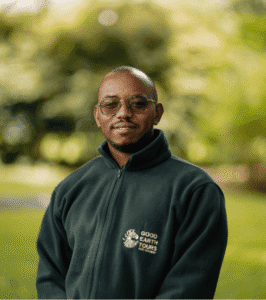
Elias Goodluck Msemo
For Elias, guiding is in his blood. Raised in a family rooted in safari adventures, he was introduced to the magic of the wild at a young age by his father, a safari driver and guide. With a background in wildlife and landscape studies, Elias brings a unique blend of personal experience, scientific understanding, and heartfelt passion to every trip. He’s known for encouraging guests to look beyond the obvious—and discover the full story of the ecosystem around them.
How did you get started in the travel or safari industry?
I grew up in a family where safaris were part of life—my father was a safari driver and guide. His stories and the adventures I got to experience alongside him sparked my love for nature early on. Summer camps deepened that connection, and I began to realize just how special Tanzania truly is. Eventually, I pursued wildlife and landscape studies in college, which laid the foundation for becoming a safari guide myself.
What’s your favorite national park or safari destination?
Tarangire is my favorite. The riverine landscape is rich in both flora and fauna, and it’s the perfect place to witness how environmental changes—like rainfall and temperature—affect animal behavior. Each season, even each part of the day, tells a different story.
What’s one thing most travelers don’t expect about going on safari?
A lot of travelers come expecting to check off the Big Five, but safari is so much more than that. I always encourage guests to take in the entire picture—the myths, cultures, landscapes, and stories woven into the experience. Everything in the ecosystem, from dung beetles to apex predators, plays a role. Once you start seeing those connections, the bush truly comes alive.
What’s one tip for travelers visiting Africa for the first time?
Bring a good quality telephoto lens! It allows you to capture all the action without disturbing the wildlife. We’re guests in their space, and keeping a respectful distance helps ensure their behaviors stay natural—and your experience stays unforgettable.
What’s the best part about being part of the Good Earth Tours team?
Good Earth is more than a safari company—it’s a family. The support is always there, whether it’s tackling a challenge or sharing ideas. Everyone’s voice matters, and that sense of belonging motivates me to give my best every day.
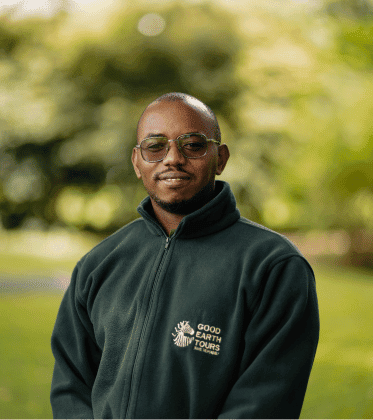
Elias Goodluck Msemo
For Elias, guiding is in his blood. Raised in a family rooted in safari adventures, he was introduced to the magic of the wild at a young age by his father, a safari driver and guide. With a background in wildlife and landscape studies, Elias brings a unique blend of personal experience, scientific understanding, and heartfelt passion to every trip. He’s known for encouraging guests to look beyond the obvious—and discover the full story of the ecosystem around them.
How did you get started in the travel or safari industry?
I grew up in a family where safaris were part of life—my father was a safari driver and guide. His stories and the adventures I got to experience alongside him sparked my love for nature early on. Summer camps deepened that connection, and I began to realize just how special Tanzania truly is. Eventually, I pursued wildlife and landscape studies in college, which laid the foundation for becoming a safari guide myself.
What’s your favorite national park or safari destination?
Tarangire is my favorite. The riverine landscape is rich in both flora and fauna, and it’s the perfect place to witness how environmental changes—like rainfall and temperature—affect animal behavior. Each season, even each part of the day, tells a different story.
What’s one thing most travelers don’t expect about going on safari?
A lot of travelers come expecting to check off the Big Five, but safari is so much more than that. I always encourage guests to take in the entire picture—the myths, cultures, landscapes, and stories woven into the experience. Everything in the ecosystem, from dung beetles to apex predators, plays a role. Once you start seeing those connections, the bush truly comes alive.
What’s one tip for travelers visiting Africa for the first time?
Bring a good quality telephoto lens! It allows you to capture all the action without disturbing the wildlife. We’re guests in their space, and keeping a respectful distance helps ensure their behaviors stay natural—and your experience stays unforgettable.
What’s the best part about being part of the Good Earth Tours team?
Good Earth is more than a safari company—it’s a family. The support is always there, whether it’s tackling a challenge or sharing ideas. Everyone’s voice matters, and that sense of belonging motivates me to give my best every day.
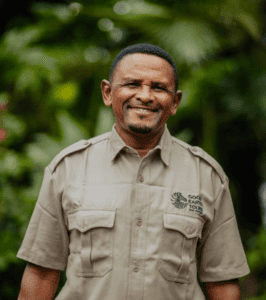
Eliasa Kawaga
Known by most as “Junior,” Eliasi is a guide who thrives in the wild and lights up on game drives. With a sharp eye for big cats and a calm, confident presence behind the wheel, Junior brings every safari to life with energy and passion. Whether he’s sharing leopard facts or recalling unforgettable sightings just meters away, his enthusiasm for the job is contagious.
What’s your favorite safari animal and why?
The leopard is my favorite animal. I’m drawn to its appearance, strength, and behavior. Leopards are incredibly powerful—they can carry heavy prey up into trees—and they’re also very elusive. Seeing one in the wild always feels like a special reward.
What’s on your personal travel bucket list?
I’d love to visit Botswana one day, especially the Okavango Delta. I’ve heard so many great stories about the landscapes and wildlife there. It’s definitely high on my list.
What’s your favorite safari memory or moment?
One moment I’ll never forget happened in Tarangire National Park. I watched a pride of lions take down a full-grown giraffe—just 10 meters from my safari jeep. It was intense and incredible to witness something so rare and raw that close.
What’s your favorite national park or safari destination?
Serengeti National Park is my top pick. Its size alone is impressive, but what I really love is the diversity of terrain and landscapes. Every part of Serengeti feels different, and it always keeps things interesting.
What’s the best part about being part of the Good Earth Tours team?
The teamwork. There’s great communication and support between management and the staff, and as a guide, I feel like the company really takes care of me. It makes a big difference out in the field to know you have a solid team behind you.
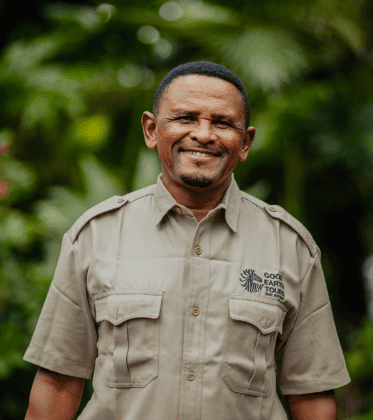
Eliasa Kawaga
Known by most as “Junior,” Eliasi is a guide who thrives in the wild and lights up on game drives. With a sharp eye for big cats and a calm, confident presence behind the wheel, Junior brings every safari to life with energy and passion. Whether he’s sharing leopard facts or recalling unforgettable sightings just meters away, his enthusiasm for the job is contagious.
What’s your favorite safari animal and why?
The leopard is my favorite animal. I’m drawn to its appearance, strength, and behavior. Leopards are incredibly powerful—they can carry heavy prey up into trees—and they’re also very elusive. Seeing one in the wild always feels like a special reward.
What’s on your personal travel bucket list?
I’d love to visit Botswana one day, especially the Okavango Delta. I’ve heard so many great stories about the landscapes and wildlife there. It’s definitely high on my list.
What’s your favorite safari memory or moment?
One moment I’ll never forget happened in Tarangire National Park. I watched a pride of lions take down a full-grown giraffe—just 10 meters from my safari jeep. It was intense and incredible to witness something so rare and raw that close.
What’s your favorite national park or safari destination?
Serengeti National Park is my top pick. Its size alone is impressive, but what I really love is the diversity of terrain and landscapes. Every part of Serengeti feels different, and it always keeps things interesting.
What’s the best part about being part of the Good Earth Tours team?
The teamwork. There’s great communication and support between management and the staff, and as a guide, I feel like the company really takes care of me. It makes a big difference out in the field to know you have a solid team behind you.
Our Core Team
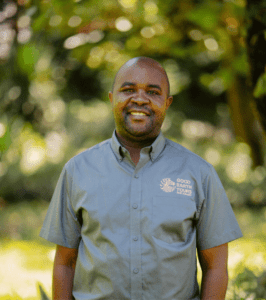
David Muhagama
David plays a key role in making sure every trip runs smoothly behind the scenes. From coordinating logistics to supporting his teammates with careful planning, David brings precision and care to the reservation process. He’s also deeply passionate about sustainability and ensuring that every guest experience helps support and protect the natural beauty of Tanzania.
What is your day-to-day job at Good Earth Tours?
I work in the reservations department, helping to organize and confirm the details of our guests’ journeys—from accommodations to park logistics. My role supports both our clients and the rest of the team, ensuring every safari is seamless, well-planned, and unforgettable.
What’s your favorite national park or safari destination?
Ngorongoro Crater is my favorite. It’s the only place in Tanzania where people and wildlife live together in such a unique and peaceful way. It’s also the only place on Earth with such a dense population of wild animals inside a volcanic caldera. For me, it’s a true natural wonder—one you have to see to believe.
What’s one local phrase or word you think every safari-goer should know?
“Hakuna Matata” — it means “no worries.” It’s more than a phrase here in Tanzania—it’s a way of life, especially when you’re out in the wild.
What’s one tip for travelers visiting Africa for the first time?
As someone who cares deeply about sustainability, my biggest tip is to travel mindfully. Choose eco-friendly lodges, reduce waste, and always respect the local culture. Small, thoughtful actions go a long way in helping preserve Africa’s incredible wildlife and vibrant communities.
What’s your biggest safari tip?
Plan ahead—but leave room for spontaneity. The wild doesn’t follow a schedule, and sometimes the best moments come when you least expect them. Stay flexible, stay curious, and you’ll have the trip of a lifetime.
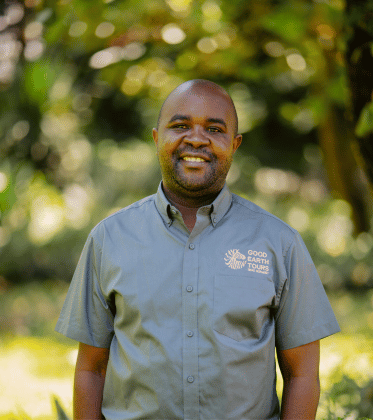
David Muhagama
David plays a key role in making sure every trip runs smoothly behind the scenes. From coordinating logistics to supporting his teammates with careful planning, David brings precision and care to the reservation process. He’s also deeply passionate about sustainability and ensuring that every guest experience helps support and protect the natural beauty of Tanzania.
What is your day-to-day job at Good Earth Tours?
I work in the reservations department, helping to organize and confirm the details of our guests’ journeys—from accommodations to park logistics. My role supports both our clients and the rest of the team, ensuring every safari is seamless, well-planned, and unforgettable.
What’s your favorite national park or safari destination?
Ngorongoro Crater is my favorite. It’s the only place in Tanzania where people and wildlife live together in such a unique and peaceful way. It’s also the only place on Earth with such a dense population of wild animals inside a volcanic caldera. For me, it’s a true natural wonder—one you have to see to believe.
What’s one local phrase or word you think every safari-goer should know?
“Hakuna Matata” — it means “no worries.” It’s more than a phrase here in Tanzania—it’s a way of life, especially when you’re out in the wild.
What’s one tip for travelers visiting Africa for the first time?
As someone who cares deeply about sustainability, my biggest tip is to travel mindfully. Choose eco-friendly lodges, reduce waste, and always respect the local culture. Small, thoughtful actions go a long way in helping preserve Africa’s incredible wildlife and vibrant communities.
What’s your biggest safari tip?
Plan ahead—but leave room for spontaneity. The wild doesn’t follow a schedule, and sometimes the best moments come when you least expect them. Stay flexible, stay curious, and you’ll have the trip of a lifetime.
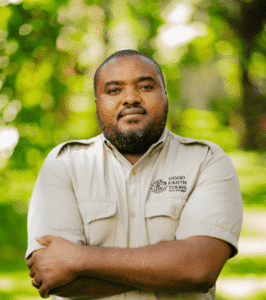
Elia Mushi
As the General Manager at Good Earth Tours, Elia brings a deep understanding of both the operations behind the scenes and the guest experience at the heart of every safari. Raised between Kilimanjaro and Arusha—two of Tanzania’s most iconic regions—Elia’s connection to the travel industry began early and has only grown stronger with time. Today, he leads with vision, passion, and a personal commitment to delivering excellence.
How did you get started in the travel or safari industry?
I was born on the slopes of Mount Kilimanjaro, and growing up between the Kilimanjaro and Arusha regions gave me a front-row seat to the tourism industry. Watching tourism thrive in my community—and seeing a family member work in the field—inspired me to follow in their footsteps and become part of it myself.
What’s your favorite national park or safari destination?
Serengeti National Park is my favorite. Its endless, dazzling plains are iconic for a reason. The Serengeti never disappoints—it’s a place where nature constantly surprises you and offers something new every time.
What do you love most about helping people plan safaris?
Every guest has dreamed about this trip—many have saved and planned for years. To play a role in helping them turn that dream into a reality is an incredible honor. Being part of that journey, even from the planning side, is deeply fulfilling.
What’s one local phrase or word you think every safari-goer should know?
Hakuna Matata—no worries. It’s not just a phrase, it’s a mindset. Embracing it allows travelers to relax, be present, and truly enjoy the journey.
What’s one tip for travelers visiting Africa for the first time?
Do your research—it’s good to be informed. But remember, not every story or article reflects your own potential experience. Come with an open mind and let Africa reveal itself to you. The best way to understand this place is to see it for yourself.
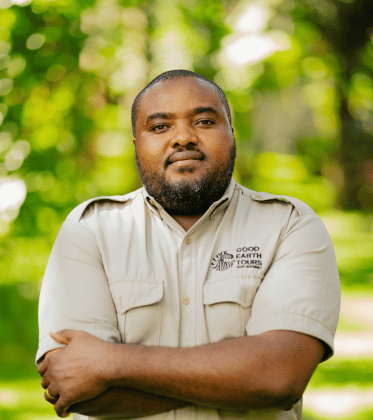
Elia Mushi
As the General Manager at Good Earth Tours, Elia brings a deep understanding of both the operations behind the scenes and the guest experience at the heart of every safari. Raised between Kilimanjaro and Arusha—two of Tanzania’s most iconic regions—Elia’s connection to the travel industry began early and has only grown stronger with time. Today, he leads with vision, passion, and a personal commitment to delivering excellence.
How did you get started in the travel or safari industry?
I was born on the slopes of Mount Kilimanjaro, and growing up between the Kilimanjaro and Arusha regions gave me a front-row seat to the tourism industry. Watching tourism thrive in my community—and seeing a family member work in the field—inspired me to follow in their footsteps and become part of it myself.
What’s your favorite national park or safari destination?
Serengeti National Park is my favorite. Its endless, dazzling plains are iconic for a reason. The Serengeti never disappoints—it’s a place where nature constantly surprises you and offers something new every time.
What do you love most about helping people plan safaris?
Every guest has dreamed about this trip—many have saved and planned for years. To play a role in helping them turn that dream into a reality is an incredible honor. Being part of that journey, even from the planning side, is deeply fulfilling.
What’s one local phrase or word you think every safari-goer should know?
Hakuna Matata—no worries. It’s not just a phrase, it’s a mindset. Embracing it allows travelers to relax, be present, and truly enjoy the journey.
What’s one tip for travelers visiting Africa for the first time?
Do your research—it’s good to be informed. But remember, not every story or article reflects your own potential experience. Come with an open mind and let Africa reveal itself to you. The best way to understand this place is to see it for yourself.
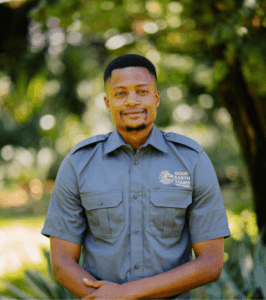
Ntimi Mwaipopo
Ntimi is the friendly force behind the scenes who helps bring each guest’s dream safari to life. Whether he’s coordinating the perfect itinerary or listening to a guest’s favorite moment post-trip, Ntimi is all about connection—from culture and landscape to people and place. He’s passionate about the magic of safari, and it shows in every interaction.
What’s your favorite safari animal and why?
The warthog is my favorite. It might not be the flashiest animal, but it has incredible survival instincts. I admire its resourcefulness—it knows how to adapt and stay alert in a world full of predators.
What’s your favorite safari memory or moment?
I’ll never forget those moments when the unexpected happens—like a cheetah jumping onto a safari vehicle, or a herd of elephants surrounding a jeep for an up-close encounter. Those surprises are what keep the safari experience so thrilling and real.
What’s your favorite national park or safari destination?
Serengeti National Park. Its endless plains have a timeless beauty. No matter how many times you go, there’s always something new to discover. You simply can’t get tired of it.
What do you love most about helping people plan safaris?
I love introducing guests to the African heartbeat. The landscapes, the language, the rhythm of the culture—it’s all part of the experience. But my favorite part is hearing their feedback. That moment when something that started as a dream becomes real—it’s incredibly rewarding to know I was a part of making it happen.
What’s one local phrase or word you think every safari-goer should know?
“Hakuna Matata.” No worries. It’s more than just a phrase—it’s a mindset we love to share with our guests from the moment they arrive.
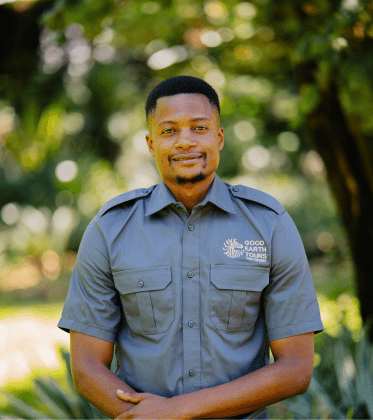
Ntimi Mwaipopo
Ntimi is the friendly force behind the scenes who helps bring each guest’s dream safari to life. Whether he’s coordinating the perfect itinerary or listening to a guest’s favorite moment post-trip, Ntimi is all about connection—from culture and landscape to people and place. He’s passionate about the magic of safari, and it shows in every interaction.
What’s your favorite safari animal and why?
The warthog is my favorite. It might not be the flashiest animal, but it has incredible survival instincts. I admire its resourcefulness—it knows how to adapt and stay alert in a world full of predators.
What’s your favorite safari memory or moment?
I’ll never forget those moments when the unexpected happens—like a cheetah jumping onto a safari vehicle, or a herd of elephants surrounding a jeep for an up-close encounter. Those surprises are what keep the safari experience so thrilling and real.
What’s your favorite national park or safari destination?
Serengeti National Park. Its endless plains have a timeless beauty. No matter how many times you go, there’s always something new to discover. You simply can’t get tired of it.
What do you love most about helping people plan safaris?
I love introducing guests to the African heartbeat. The landscapes, the language, the rhythm of the culture—it’s all part of the experience. But my favorite part is hearing their feedback. That moment when something that started as a dream becomes real—it’s incredibly rewarding to know I was a part of making it happen.
What’s one local phrase or word you think every safari-goer should know?
“Hakuna Matata.” No worries. It’s more than just a phrase—it’s a mindset we love to share with our guests from the moment they arrive.
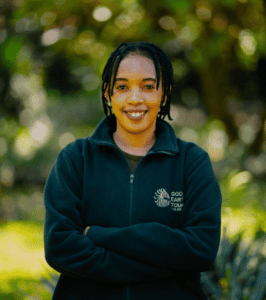
Suzanne John
Suzanne is one of the first smiling faces (or voices!) guests connect with when planning their safari. Based in the Good Earth office, she’s the go-to for crafting unforgettable experiences, offering helpful guidance, and making sure every detail is just right. With her deep love for Tanzania’s wildlife and culture, Suzanne brings passion and personal insight to every trip she helps design.
What’s your favorite safari memory or moment?
One of my favorite safari memories was in the Central Serengeti, watching a lion in full action—hunting, catching, and eating a greater gazelle. It was absolutely incredible to witness predation happening right in front of my eyes. Moments like that remind me how raw and real the wild truly is.
What’s your favorite national park or safari destination?
Ngorongoro Crater holds a special place in my heart. It’s the world’s largest caldera and packed with wildlife, but what makes it truly unique is how humans and animals coexist. Seeing Maasai communities living in harmony with their cattle and the wild animals—it’s an amazing, peaceful balance you don’t see anywhere else.
What’s one tip for travelers visiting Africa for the first time?
My best advice? Take it slow—pole pole as we say here. Soak it all in: the culture, the people, the wildlife, the landscapes. As the saying goes, “No rush in Africa.” That’s where the magic is—when you stop trying to rush and just experience it all.
What’s your most memorable wildlife sighting?
I’ll never forget the moment a pride of lions, including tiny cubs, crossed the road right in front of our Land Cruiser in Serengeti. The cubs were so small and playful—it melted my heart! Seeing them so close was unforgettable.
What’s the best part about being part of the Good Earth Tours team?
It’s the people. I’ve learned so much from my coworkers here—not just about the job, but about teamwork and passion. At Good Earth, I didn’t just find a workplace—I found a family.
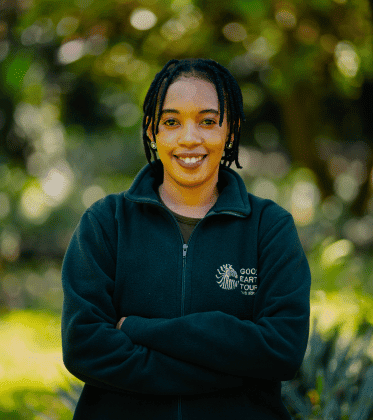
Suzanne John
Suzanne is one of the first smiling faces (or voices!) guests connect with when planning their safari. Based in the Good Earth office, she’s the go-to for crafting unforgettable experiences, offering helpful guidance, and making sure every detail is just right. With her deep love for Tanzania’s wildlife and culture, Suzanne brings passion and personal insight to every trip she helps design.
What’s your favorite safari memory or moment?
One of my favorite safari memories was in the Central Serengeti, watching a lion in full action—hunting, catching, and eating a greater gazelle. It was absolutely incredible to witness predation happening right in front of my eyes. Moments like that remind me how raw and real the wild truly is.
What’s your favorite national park or safari destination?
Ngorongoro Crater holds a special place in my heart. It’s the world’s largest caldera and packed with wildlife, but what makes it truly unique is how humans and animals coexist. Seeing Maasai communities living in harmony with their cattle and the wild animals—it’s an amazing, peaceful balance you don’t see anywhere else.
What’s one tip for travelers visiting Africa for the first time?
My best advice? Take it slow—pole pole as we say here. Soak it all in: the culture, the people, the wildlife, the landscapes. As the saying goes, “No rush in Africa.” That’s where the magic is—when you stop trying to rush and just experience it all.
What’s your most memorable wildlife sighting?
I’ll never forget the moment a pride of lions, including tiny cubs, crossed the road right in front of our Land Cruiser in Serengeti. The cubs were so small and playful—it melted my heart! Seeing them so close was unforgettable.
What’s the best part about being part of the Good Earth Tours team?
It’s the people. I’ve learned so much from my coworkers here—not just about the job, but about teamwork and passion. At Good Earth, I didn’t just find a workplace—I found a family.
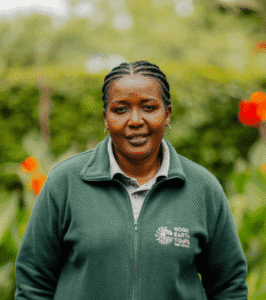
Juliet Kamili
Juliete is one of the key players behind the scenes who helps turn dream safaris into reality. With an eye for detail, a love for adventure, and a personal touch that guests always feel, Juliete makes sure every trip starts on the right note. For her, it’s not just about planning—it’s about creating memories that last a lifetime.
What’s your favorite safari animal and why?
Giraffes are my favorite! They’re the softest and most flexible animals in the kingdom, tall and stylish, and they’re never in a rush. Watching them move so gracefully across the savanna always brings a smile.
What’s your favorite safari memory or moment?
One time during a game drive, a lion walked right past our safari vehicle, looked at us, and kept going—only to later climb right onto the front of our Land Cruiser! It was such an incredible moment—so close, so powerful, and completely unforgettable.
What do you love most about helping people plan safaris?
Honestly, the best part is seeing someone’s dream trip turn into their best trip ever—and knowing I helped make it happen. From picking the perfect vehicle to choosing the best views, and then seeing the photos afterward with their happy, smiling faces… it’s the most rewarding feeling.
What’s one local phrase or word you think every safari-goer should know?
Jambo! It means hello, but it’s more than that—it’s a welcoming, friendly word that instantly connects you to the people here.
What’s the best part about being part of the Good Earth Tours team?
It truly feels like being part of a family—one that just happens to plan epic adventures for a living. We laugh a lot, we work hard, and we genuinely care about every traveler as if they were one of our own. Whether it’s choosing the perfect lodge or tracking down the best guide, everyone here puts their heart into making each trip unforgettable.
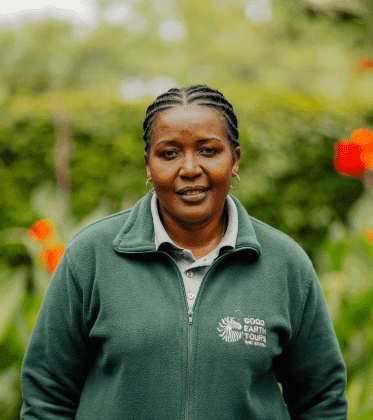
Juliet Kamili
Juliete is one of the key players behind the scenes who helps turn dream safaris into reality. With an eye for detail, a love for adventure, and a personal touch that guests always feel, Juliete makes sure every trip starts on the right note. For her, it’s not just about planning—it’s about creating memories that last a lifetime.
What’s your favorite safari animal and why?
Giraffes are my favorite! They’re the softest and most flexible animals in the kingdom, tall and stylish, and they’re never in a rush. Watching them move so gracefully across the savanna always brings a smile.
What’s your favorite safari memory or moment?
One time during a game drive, a lion walked right past our safari vehicle, looked at us, and kept going—only to later climb right onto the front of our Land Cruiser! It was such an incredible moment—so close, so powerful, and completely unforgettable.
What do you love most about helping people plan safaris?
Honestly, the best part is seeing someone’s dream trip turn into their best trip ever—and knowing I helped make it happen. From picking the perfect vehicle to choosing the best views, and then seeing the photos afterward with their happy, smiling faces… it’s the most rewarding feeling.
What’s one local phrase or word you think every safari-goer should know?
Jambo! It means hello, but it’s more than that—it’s a welcoming, friendly word that instantly connects you to the people here.
What’s the best part about being part of the Good Earth Tours team?
It truly feels like being part of a family—one that just happens to plan epic adventures for a living. We laugh a lot, we work hard, and we genuinely care about every traveler as if they were one of our own. Whether it’s choosing the perfect lodge or tracking down the best guide, everyone here puts their heart into making each trip unforgettable.

Roses Moses
Rose is one of the first smiling faces many guests meet when they arrive. From booking accommodations to welcoming travelers for their safari briefings, she brings warmth, efficiency, and a personal touch to everything she does. She’s often called the heart of the reservations team—known for her kindness, attention to detail, and deep love for elephants.
What is your day-to-day job at Good Earth Tours?
I help book and confirm hotel accommodations and meet guests in person for their safari briefings. It’s important to me that every guest feels welcomed, excited, and prepared before heading out on their adventure.
What’s your favorite safari animal and why?
Elephants are my favorite—they are the largest land animals, and I admire how social, intelligent, and family-oriented they are. They live together in close family units and have incredible memories. You can see their emotional intelligence, and that always amazes me.
How did you get started in the travel or safari industry?
Working in tourism has been my dream since childhood. After finishing high school, I enrolled in a tourism course and was lucky to start my career at Good Earth Tours. It’s been a dream come true to help bring people closer to the beauty of Tanzania.
What’s your favorite national park or safari destination?
Tarangire National Park is my favorite—because it’s home to large herds of elephants, and since elephants are my favorite, it feels extra special. The landscape is also beautiful and unique.
What’s one local phrase or word you think every safari-goer should know?
“Jambo!” I always greet guests with a warm smile and a friendly handshake, saying “Jambo” to show how happy I am to meet them for their safari briefing. It’s a simple word, but it carries a lot of warmth.
Do you prefer sunrise or sunset on safari? Why?
I prefer sunrise. It’s when the animals are most active, and the colors in the sky are absolutely stunning. It feels like a fresh start and a perfect time to begin an adventure.
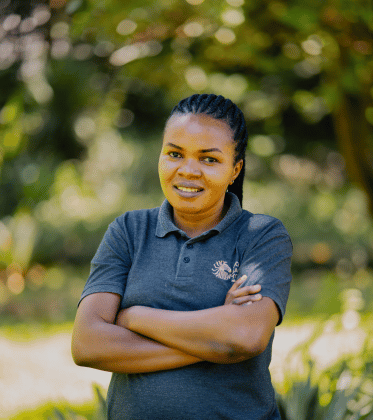
Roses Moses
Rose is one of the first smiling faces many guests meet when they arrive. From booking accommodations to welcoming travelers for their safari briefings, she brings warmth, efficiency, and a personal touch to everything she does. She’s often called the heart of the reservations team—known for her kindness, attention to detail, and deep love for elephants.
What is your day-to-day job at Good Earth Tours?
I help book and confirm hotel accommodations and meet guests in person for their safari briefings. It’s important to me that every guest feels welcomed, excited, and prepared before heading out on their adventure.
What’s your favorite safari animal and why?
Elephants are my favorite—they are the largest land animals, and I admire how social, intelligent, and family-oriented they are. They live together in close family units and have incredible memories. You can see their emotional intelligence, and that always amazes me.
How did you get started in the travel or safari industry?
Working in tourism has been my dream since childhood. After finishing high school, I enrolled in a tourism course and was lucky to start my career at Good Earth Tours. It’s been a dream come true to help bring people closer to the beauty of Tanzania.
What’s your favorite national park or safari destination?
Tarangire National Park is my favorite—because it’s home to large herds of elephants, and since elephants are my favorite, it feels extra special. The landscape is also beautiful and unique.
What’s one local phrase or word you think every safari-goer should know?
“Jambo!” I always greet guests with a warm smile and a friendly handshake, saying “Jambo” to show how happy I am to meet them for their safari briefing. It’s a simple word, but it carries a lot of warmth.
Do you prefer sunrise or sunset on safari? Why?
I prefer sunrise. It’s when the animals are most active, and the colors in the sky are absolutely stunning. It feels like a fresh start and a perfect time to begin an adventure.
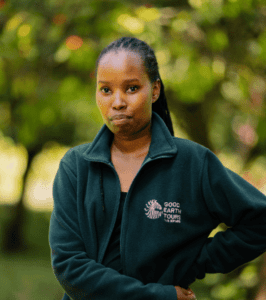
Saida Kileo
Saida is part of the team that keeps things running smoothly behind the scenes, helping to coordinate the details that make every safari experience unforgettable. With a deep love for wildlife and a great appreciation for the magic of the wild, she brings care, curiosity, and energy to her work every day. Whether it’s swapping safari stories or helping guests prepare for their journey, Saida is always ready to share the excitement.
What’s your favorite safari animal and why?
The elephant is my favorite safari animal. It’s the biggest of them all—majestic, intelligent, and incredibly resourceful. Elephants can find water even during the dry season, and their memory is legendary. Fun fact: elephants are emotional animals. They can actually mourn the loss of a family member, just like humans.
What’s your favorite safari memory or moment?
One unforgettable moment was in Ngorongoro Crater. We spotted a female rhino with her calf and stopped to watch them. At first, she seemed calm, but then she started walking straight toward us. We thought she was just crossing the road—but she charged! She must have seen us as a threat to her baby. Thankfully, our driver acted quickly and we drove off just in time. It was scary—but honestly, also kind of fun.
What’s one thing most travelers don’t expect about going on safari?
Many people don’t realize how up-close and personal the safari experience is. Seeing wild animals just meters away is thrilling—and surprisingly peaceful too. It’s a chance to slow down, reconnect with nature, and take in moments you’ll never forget.
What’s one tip for travelers visiting Africa for the first time?
Expect the unexpected! Africa is full of surprises and wonders. Keep an open mind—you’ll learn so many new and fascinating things.
What’s the best part about being part of the Good Earth Tours team?
The team here is incredible. Everyone brings real experience and passion for the safari world, and they’re always ready to help each other out. I’ve learned so much just by being around them. It feels less like a workplace and more like a team with one shared goal: to create amazing experiences for our guests.
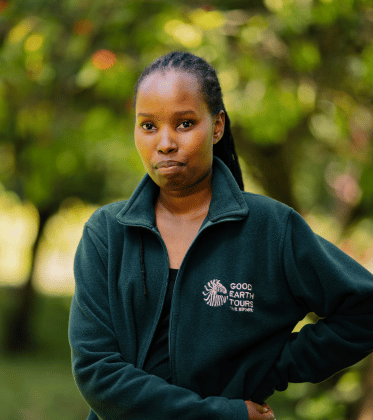
Saida Kileo
Saida is part of the team that keeps things running smoothly behind the scenes, helping to coordinate the details that make every safari experience unforgettable. With a deep love for wildlife and a great appreciation for the magic of the wild, she brings care, curiosity, and energy to her work every day. Whether it’s swapping safari stories or helping guests prepare for their journey, Saida is always ready to share the excitement.
What’s your favorite safari animal and why?
The elephant is my favorite safari animal. It’s the biggest of them all—majestic, intelligent, and incredibly resourceful. Elephants can find water even during the dry season, and their memory is legendary. Fun fact: elephants are emotional animals. They can actually mourn the loss of a family member, just like humans.
What’s your favorite safari memory or moment?
One unforgettable moment was in Ngorongoro Crater. We spotted a female rhino with her calf and stopped to watch them. At first, she seemed calm, but then she started walking straight toward us. We thought she was just crossing the road—but she charged! She must have seen us as a threat to her baby. Thankfully, our driver acted quickly and we drove off just in time. It was scary—but honestly, also kind of fun.
What’s one thing most travelers don’t expect about going on safari?
Many people don’t realize how up-close and personal the safari experience is. Seeing wild animals just meters away is thrilling—and surprisingly peaceful too. It’s a chance to slow down, reconnect with nature, and take in moments you’ll never forget.
What’s one tip for travelers visiting Africa for the first time?
Expect the unexpected! Africa is full of surprises and wonders. Keep an open mind—you’ll learn so many new and fascinating things.
What’s the best part about being part of the Good Earth Tours team?
The team here is incredible. Everyone brings real experience and passion for the safari world, and they’re always ready to help each other out. I’ve learned so much just by being around them. It feels less like a workplace and more like a team with one shared goal: to create amazing experiences for our guests.